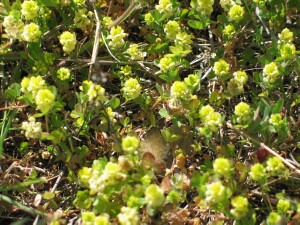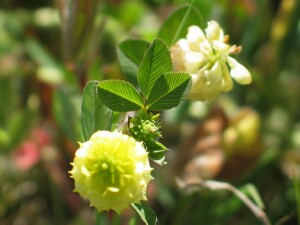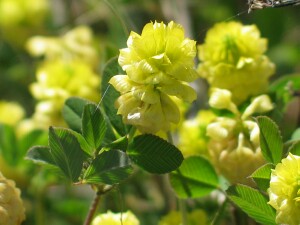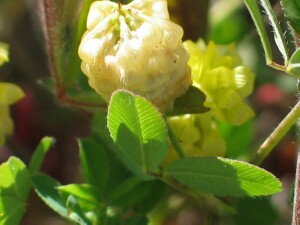Hop Clover
Back | Salinity Indicator Plants Home | Common name home | Scientific name home | Photo Gallery | Glossary
| Hop Clover photos | Family: Pea (Fabaceae syn. Papilionaceae) |
| Scientific Name: | Trifolium campestre |  Population of Hop Clover Photo: A J Brown | |||||
Status: | Native to Europe, the Middle East and northern Africa. | ||||||
Plant Description: | Annual herb with prostrate or ascending habit. Stems 5-50 cm long, simple or branching, sparely hairy to almost hairless. Leaves are trifoliate with rhombic to oblong-elliptic leaflets, 8-16 mm long and 4-8 mm wide, virtually hairless, finely toothed. Stipules (leaf-like structures at the base of the leaf and flower-stalks) leafy and fused to the flower stalk for half their length. Flowers yellow, many, closely overlapping in a near globular head, 8-15 mm long and 7-10 mm wide. | ||||||
Habitat: | Widespread and common weed of pastures, cultivation and waste areas across Victoria. Typically a plant of fresh-water habitats but may occur on the fringes of saline swamps and flats during wetter periods.
| ||||||
Comments: | One of a number of small annual clovers found in pastures, waste ground and bordering swamps, lakes and water courses. A simple key to the more common of these species is provided (Key to common annual clovers). Other clovers, but with a perennial habit, include Strawberry Clover (Trifolium fragiferum), White Clover (Trifolium repens) and Red Clover (Trifolium pratense). | ||||||
 Hop Clover leaf Photo: A J Brown |
|
|




